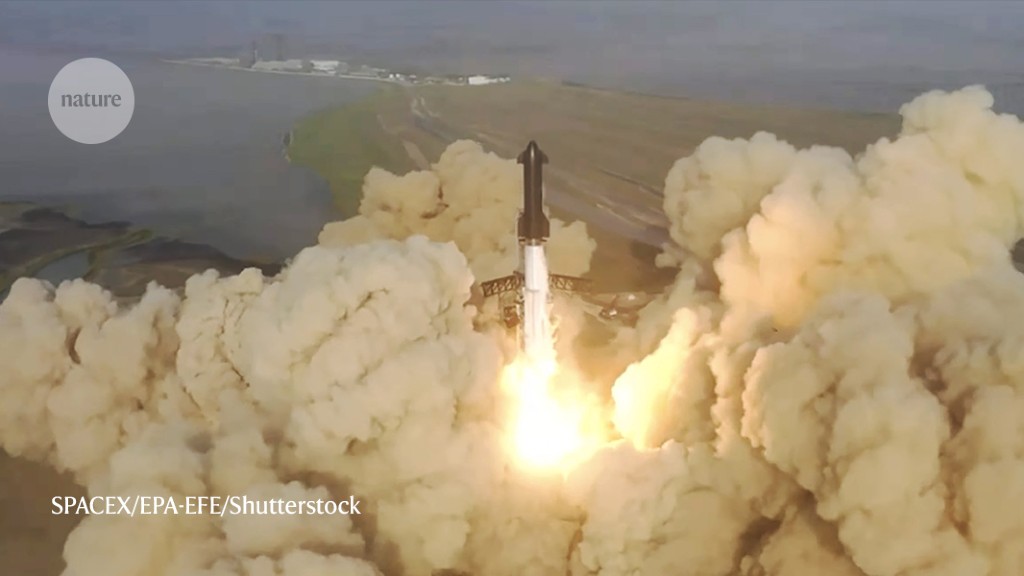The First Test of SpaceX’s Super Heavy Rocket and Launch Vehicle at Boca Chica, Texas, Decaying Without A Hitch
SpaceX wants to use Starship to colonize Mars. More immediately, NASA aims to use the vehicle to help put astronauts on the surface of the Moon in the coming years as part of its planned Artemis missions. And scientists are dreaming of how they might use Starship’s enormous size to carry big telescopes or planetary missions into deep space.
The Super Heavy rocket and stage were separated just four minutes after liftoff from the Boca Chica launch site in southern Texas.
This test flight aimed to go almost orbital. The ship was supposed to fly to an altitude of 146 miles and make most of a lap around the Earth. The Super Heavy rocket was planned to splash down off the Texas coast soon after launch, and the Starship vehicle would have splashed down at the end of its trip 90 minutes later, off the coast of Kauai, Hawaii.
The largest rocket ever built went off without a hitch in Texas today and exploded before it reached space, ending its first major test flight. Starship and its booster cleared the launch pad and soared to 39 kilometres high, then rotated out of control and blew up four minutes into flight, before the two could separate as planned. “Obviously, this is not a nominal situation,” said John Insprucker, principal integration engineer for the company SpaceX, which built Starship, on a webcast of the launch attempt.
Prior to this week, the company did not respond to WIRED’s requests for information about the launch. There were some signs that it was imminent: the FAA included the launch in their plan advisory, with backup dates through April 22. And officials in Cameron County, Texas, announced last week that Boca Chica Beach and the local road, State Highway 4, would be closed on April 17, with the following two days as possible backups.
The first full test of the rocket was a partial success. It could change astrophysics and astronomy, as well as ferry people to the Moon and Mars.
Still, the fact that it got off the launch pad, powered by up to 33 engines firing in synchrony, marks a substantial step beyond what SpaceX has been able to do so far with its most ambitious rocket. Insprucker said thatship gave them a spectacular end to the test.
It’s already developed rockets that can launch satellites for the governments, companies and other customers. They believe they can deploy even larger objects, such as the next generation of its Starlink communications satellites, which are rumored to interfere with observations of the night sky.
At NASA’s Ames Research Center in Moffett Field, California, planetary scientist Jennifer Heldmann states that space flight has always been constrained by mass, volume and cost. All the constraints are lifted with Starship.
NASA had a fleet of space shuttles that flew135 times to low Earth orbit and back between 1981 and 2011. But NASA eventually retired the shuttle in favour of developing the more powerful SLS to travel farther away from Earth.
Still, developing any new rocket is challenging, as today’s flight showed. There are many other Starships built by the company, and it will likely test another one in the near future. According to Forczyk, there could be a lot of progress this year. “Or not.”
NASA Administrator Bill Nelson and retired International Space Station Commander Chris Hadfield said Thursday’s launch was a success. It was approved by the company, which is called SpaceX.
Brendan Byrne told Morning Edition on Thursday that the company’s philosophy is to design based on failure. He added that SpaceX said before the mission that any data it yielded would be valuable as long as the rocket cleared the launch pad — which it did.
A business woman says visibility and transparency in its test process is a good thing.
The space industry analyst said the test is in line with the program. “Now, it’s always great in a test if everything works flawlessly. That’s an unrealistic expectation with a vehicle this complex.”
It’s interesting that the loss of the test article is consistent with the approach to developing the Starship system taken by SpaceX. In designing and developing and testing complex hardware, you can use analysis and computer simulations to figure out what will work and what won’t, and you can use physical tests in the real world. And SpaceX has been very hardware-intensive in its development program, conducting many physical tests, as we very dramatically have seen.
SpaceX’s Falcon 9 rocket: How much do we need to know about the future of space and the impact it has on future space missions?
SpaceX talks about this rocket in the context of aspiring to change what humanity does in space. The Falcon 9 has been the most popular launch vehicle of existing space activities. The achievement was that you don’t throw away the rocket at each launch and you reuse it. And so SpaceX’s Falcon 9 vehicle contributed to lower prices, a faster launch cadence and has helped attract investment in space ventures that use satellites and serve other existing space markets.
I think we would see a next step in vehicle performance and function. But I certainly would not say that we won’t see a test article dramatically and excitingly “disassemble.”
